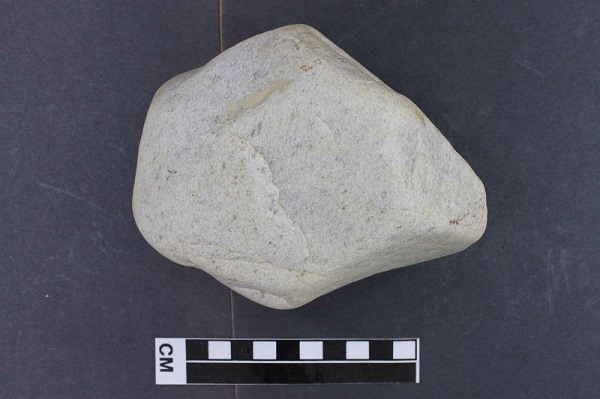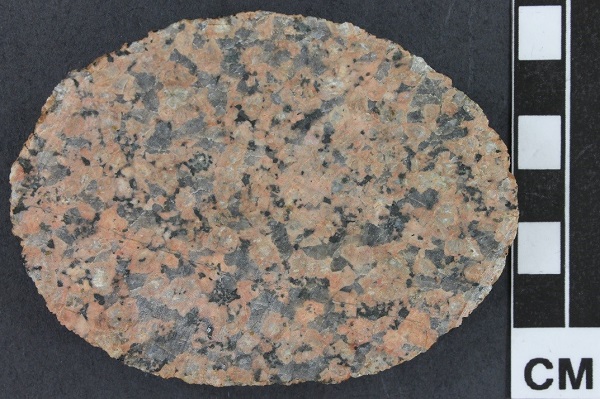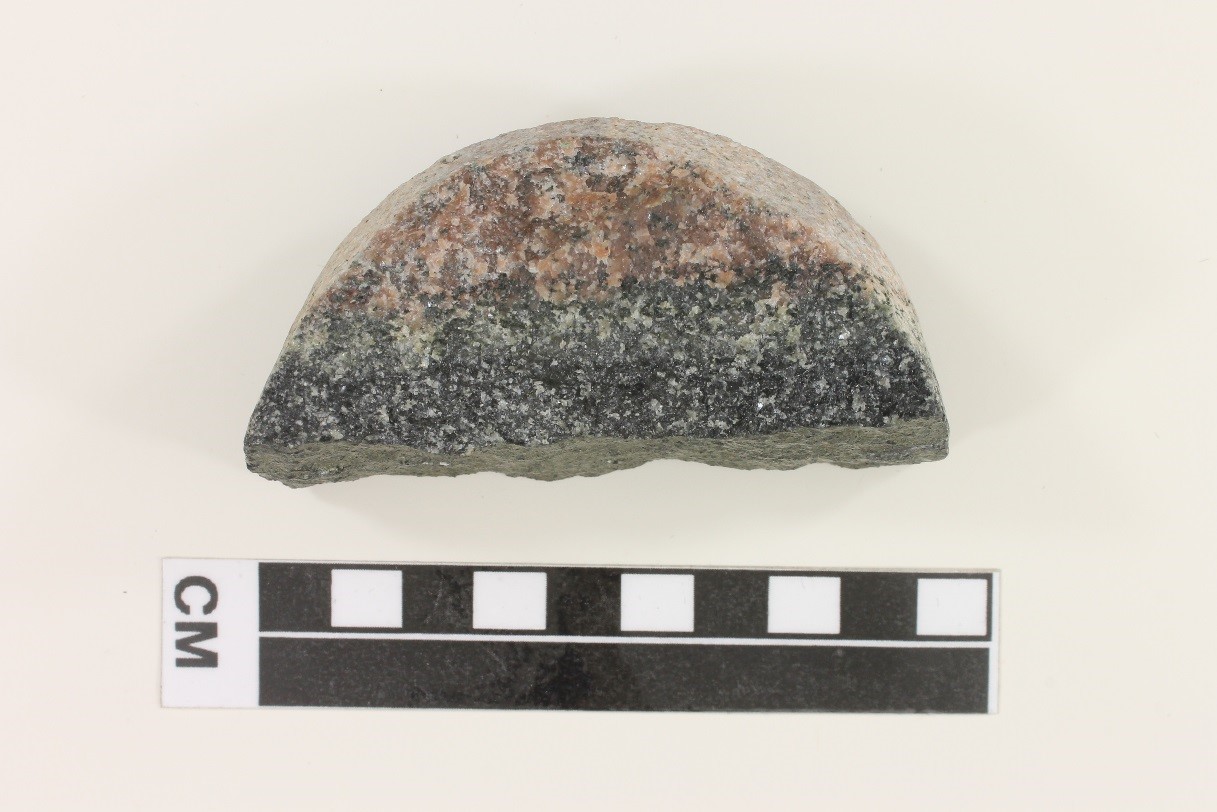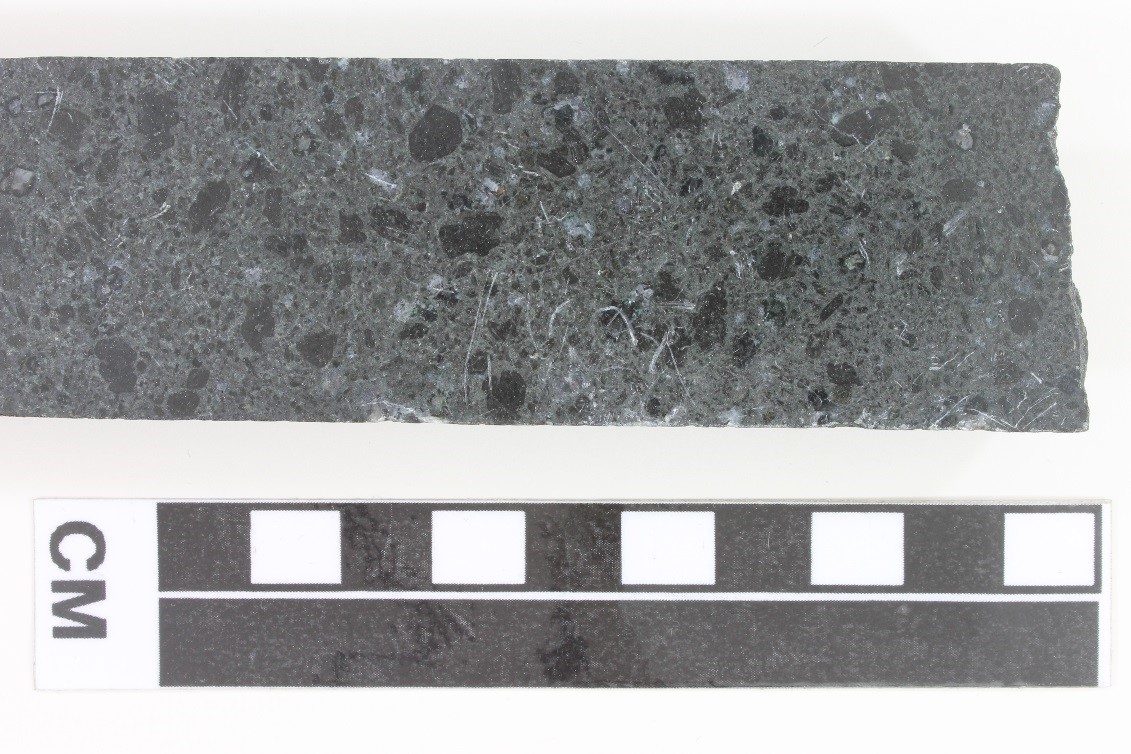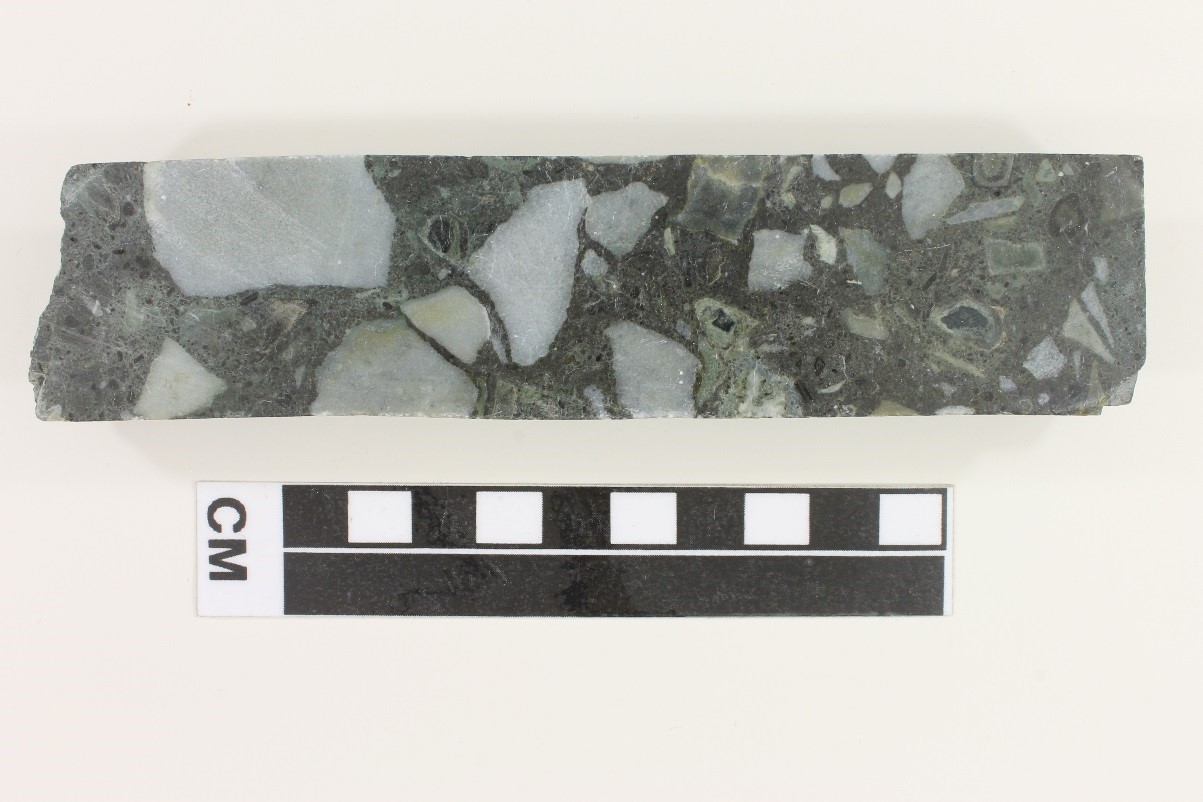Igneous Rocks
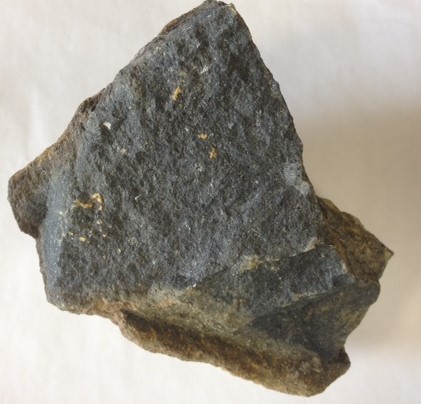
Igneous rocks are rare in surface exposures in Kentucky. They are formed by the cooling and solidification of molten rock (magma) that originated deep within the earth. The two main types of igneous rocks are intrusive, which formed when magma cooled slowly and hardened beneath the earth's surface, and extrusive, which formed when magma solidified after it reached the surface.
In Kentucky, a dark-colored igneous rock, peridotite, occurs in sills and dikes (intrusions) in Elliott County in eastern Kentucky and Caldwell, Crittenden, and Livingston Counties in western Kentucky. Peridotites formed deep in the earth near the mantle under high temperature and pressure, and were thrust explosively toward the surface where they intruded into the host rocks. Peridotite consists in part of the minerals olivine and pyroxene.
The Elliott County peridotite is a special type of peridotite called kimberlite. It is dark green to black and composed of various grain sizes (porphyritic texture) in a fine- to medium-grained groundmass called a matrix. Olivine is the most abundant mineral in the dikes and accounts for the greenish color of the rock. Most of the calcite in these igneous rocks is primary, meaning it is of magmatic origin.
Kimberlites are famous for containing diamonds. The dikes in Elliott County are geologically similar to the diamond-bearing kimberlites in Kimberly, South Africa, and lamproites (formerly called kimberlites) in Arkansas, where diamonds have been mined extensively; however, diamonds have never been found or authenticated from the Elliott County deposits.
More than 50 known peridotite dikes occur in Livingston and Crittenden Counties in the Western Kentucky Fluorspar District. These dikes have been altered and vary in mineralogical content because of differences in the original magma, and some are enriched in rare minerals and rare earth elements. New research about these rocks and their rare earth potential is being finalized (Anderson, in press)
Igneous rocks have also been found in glacial deposits in northern Kentucky. These glacial erratics were transported from elsewhere and were deposited by meltwater from glaciers to the northeast during the last Pleistocene ice age, called the Wisconsinan stage, during global warming events about 15,000 years ago. Some of these erratics can be very large and widespread, and occur many places in northern Kentucky. The original source of these igneous rocks is most likely the northern Appalachian Mountains or Canada.
Other igneous rocks such as granites, basalts, gneisses, and amphibolite occur in the deep subsurface of Kentucky. Most of these rocks are 5,000 to 15,000 feet below the surface, and are encountered when oil or mineral wells are drilled.
Go Back to Rocks

